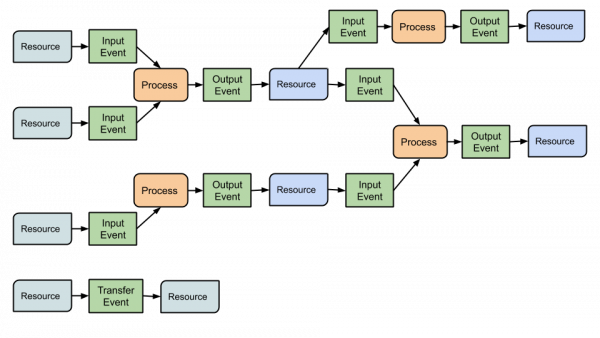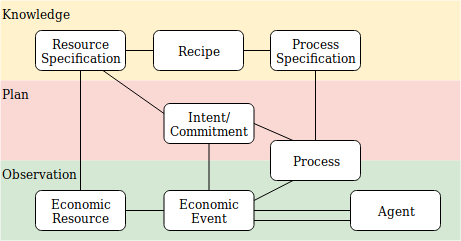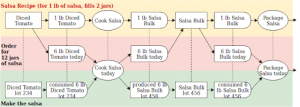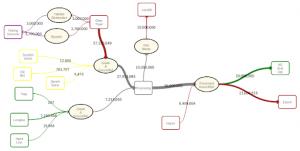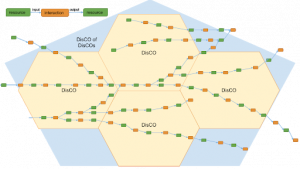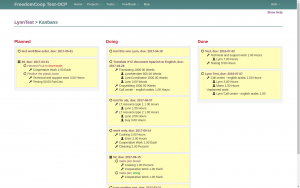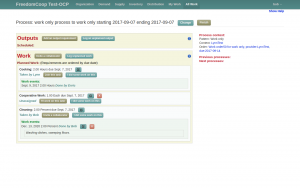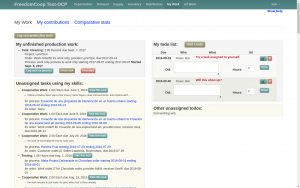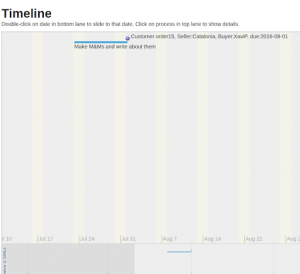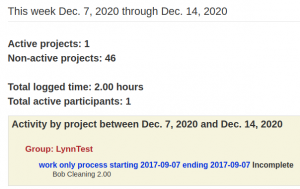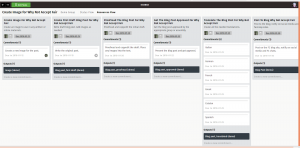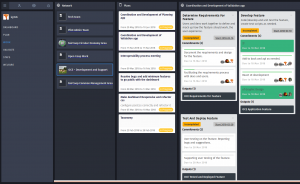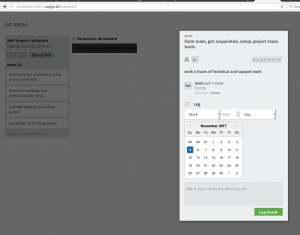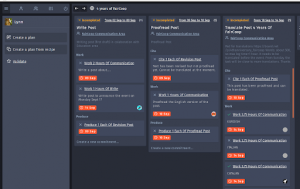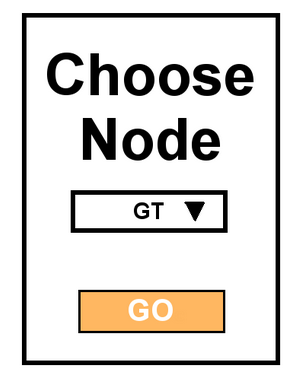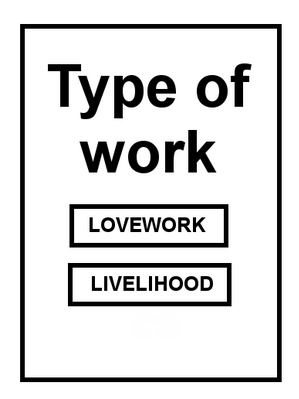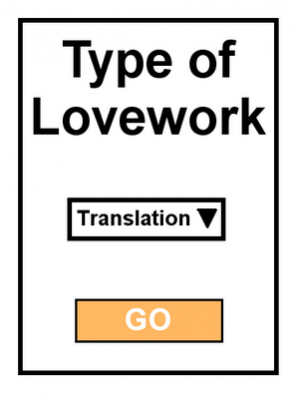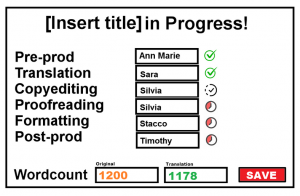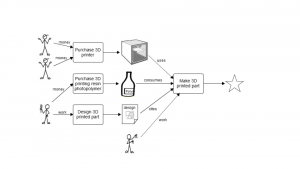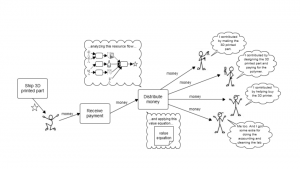Difference between revisions of "DisCO and Valueflows"
| (5 intermediate revisions by 3 users not shown) | |||
| Line 7: | Line 7: | ||
== Key Valueflows concepts == | == Key Valueflows concepts == | ||
| − | + | '''REA''' (Resources, Events, Agents) | |
| − | * | + | * '''Agents''' perform '''Economic Events''' affecting '''Economic Resources'''. |
| − | * | + | * '''Agents''' can be individual persons or organizations of various types. They can be related in user-defined ways, like “member” or “trading partner”. |
| − | * An | + | * An '''Economic Event''' can take actions like create, change, consume, use, or destroy Economic Resources, or transfer them from one Agent to another, or transport them from one place to another. |
| − | * | + | * '''Economic Resources''' are anything of value, however you define that - examples are |
| − | **Useful goods and services | + | ** Useful goods and services |
| − | **Money, tokens, credits | + | ** Money, tokens, credits |
| − | **Labor power, skills | + | ** Labor power, skills |
| − | **Documented knowledge | + | ** Documented knowledge |
| − | **Air, water, soil | + | ** Air, water, soil |
| − | **Etc. | + | ** Etc. |
| − | + | '''Resource flows''' | |
| − | * The basic pattern for modeling resource flows as resources are produced, consumed, used, modified, etc. is | + | * The basic pattern for modeling resource flows as resources are produced, consumed, used, modified, etc. is '''input-process-output'''. |
| − | * When things are distributed or exchanged, it is a straight | + | * When things are distributed or exchanged, it is a straight '''transfer''' of rights and responsibilities for a resource. |
* Resource flows can be of any length, or circular. | * Resource flows can be of any length, or circular. | ||
| Line 30: | Line 30: | ||
| − | [[File:IPO and Transfer Diagram.png| | + | [[File:IPO and Transfer Diagram.png| 600 px |center]] |
| − | + | '''Layers''' | |
| − | [[File:Knowledge Plan Observation.png| | + | [[File:Knowledge Plan Observation.png|600 px|center]] |
| − | * The | + | * The '''Knowledge''' level represents classification, policies, procedures, rules and patterns. This is where each DisCO can configure the core concepts to fit their needs. |
| − | * The | + | * The '''Plan''' level represents schedules and agreements. |
| − | * The | + | * The '''Observation''' level represents what really happened. |
| Line 46: | Line 46: | ||
| − | + | '''Resource flow networks can be fractal''' | |
| − | The model works at all levels and can be used for higher level planning and analysis, as well as day to day operations. | + | The model works at all levels and can be used for higher-level planning and analysis, as well as day-to-day operations. |
| Line 54: | Line 54: | ||
| − | + | '''DisCOs of DisCOs (networks of networks)''' | |
[[File:DisCO of DisCOs.png|thumb|center]] | [[File:DisCO of DisCOs.png|thumb|center]] | ||
| − | |||
== Integrated information example == | == Integrated information example == | ||
| Line 70: | Line 69: | ||
| − | Each of the subheadings in the cards above is a hyperlink | + | Each of the subheadings in the cards above is a hyperlink that opens to a page where people can log their work and other inputs and what they created: |
| Line 98: | Line 97: | ||
=== DisCO Functions === | === DisCO Functions === | ||
| − | + | The main functions of the DisCO Deck are '''Planning, Doing, Distributing Rewards, Reporting'''. Secondary functions include simple '''Exchanges''', like purchases or deliveries outside the DisCO. All of this can be integrated data, either in one DisCO Deck app, or separate apps that can talk to each other using Valueflows (perhaps federated), or one backend app with different UI components that talk to the backend using Valueflows. | |
| − | === | + | === ''Plan the work'' === |
| − | DisCO currently does this in Trello. A lot of people like Trello, and it works very well for some kinds of work, but not all. And the column/card model is too simple because it doesn’t connect the processes together or know about resources. But we can take ideas from it, or possibly plug in an open source version for the user interface. | + | DisCO currently does this in Trello. A lot of people like Trello, and it works very well for some kinds of work, but not all. And the column/card model is too simple because it doesn’t connect the processes together or know about resources. But we can take ideas from it, or possibly plug in an open-source version for the user interface. |
Planning can be done from scratch. Or groups can create (and share) recipes for any work that is more or less repeatable. When the Valueflows software plans from a recipe, it can adjust for output quantity, can adjust for existing inventory, and can tell you what you need to get that you don’t have. | Planning can be done from scratch. Or groups can create (and share) recipes for any work that is more or less repeatable. When the Valueflows software plans from a recipe, it can adjust for output quantity, can adjust for existing inventory, and can tell you what you need to get that you don’t have. | ||
| − | === | + | |
| + | === ''Do the work'' === | ||
DisCO currently uses Trello to coordinate and Clockify to log time. | DisCO currently uses Trello to coordinate and Clockify to log time. | ||
| Line 109: | Line 109: | ||
Things like Livelihood, Love, and Care “tags” that will be standard for all DisCOs can be configured into the app as a default. | Things like Livelihood, Love, and Care “tags” that will be standard for all DisCOs can be configured into the app as a default. | ||
| − | === | + | |
| + | === ''Distribute Income'' === | ||
DisCO currently uses spreadsheets. | DisCO currently uses spreadsheets. | ||
| − | In Valueflows software, you can create a “value equation” with all the rules, specify what logged work should be included (like for the month, or all the work that created this deliverable) and what income should be distributed, and push the button. | + | In Valueflows software, you can create a “value equation” with all the rules, specify what logged work should be included (like for the month, or all the work that created this deliverable) and what income should be distributed, and push the button. |
| − | === | + | |
| + | === ''Reporting'' === | ||
DisCO currently uses spreadsheets. | DisCO currently uses spreadsheets. | ||
| − | With all the financial data available in the same format, lots of reports can be created, including standard financial reports | + | With all the financial data available in the same format, lots of reports can be created, including standard financial reports, but also whatever you want. |
| + | |||
== Other examples - just food for thought == | == Other examples - just food for thought == | ||
| Line 131: | Line 134: | ||
| − | [[File:Choose Node.png|thumb]] | + | [[File:Choose Node.png|thumb|center]] |
| − | [[File:Type of Work.png|thumb]] | + | [[File:Type of Work.png|thumb|center]] |
| − | [[File:Type of Lovework.png|thumb]] | + | [[File:Type of Lovework.png|thumb|center]] |
| + | |||
[[File:Insert Title.png|thumb|center]] | [[File:Insert Title.png|thumb|center]] | ||
| − | |||
| − | |||
| − | |||
| − | |||
| − | |||
| − | |||
| − | |||
| − | |||
| − | |||
| − | |||
| − | |||
| − | |||
| Line 153: | Line 145: | ||
| + | [[File:Pasted image 0.png|thumb|center]] | ||
| + | [[File:Pasted image 0 (1).png|thumb|center]] | ||
| − | + | Here are the Cooperation Jackson proposed co-ops. If we can, it would be good to think ahead (with our Lab partners' help if possible) what these operational differences imply to the configurability of the software, while keeping the DisCO vision intact. | |
| − | |||
| − | |||
| − | |||
| − | |||
| − | |||
| − | |||
| − | |||
| − | Here are the Cooperation Jackson proposed co-ops. If we can, it would be good to think ahead (with our Lab partners help if possible) what these operational differences imply to configurability of the software, while keeping the DisCO vision intact. | ||
* Waste Management Cooperative | * Waste Management Cooperative | ||
Latest revision as of 11:46, 31 March 2021
Intro
This is to explore how to map DisCO to the Valueflows vocabulary and model, as part of understanding what we want the software to be. The specific goals today:
- Introduce DisCONauts to Valueflows
- Start to think about what we understand will apply to all DisCOs and what needs to be configurable by different DisCOs
- Start to think about how to integrate all the DisCO functions into connected and efficient flows so people can focus on real work
- Start to think about the overlaps between the Stack and the Deck, as currently defined
Key Valueflows concepts
REA (Resources, Events, Agents)
- Agents perform Economic Events affecting Economic Resources.
- Agents can be individual persons or organizations of various types. They can be related in user-defined ways, like “member” or “trading partner”.
- An Economic Event can take actions like create, change, consume, use, or destroy Economic Resources, or transfer them from one Agent to another, or transport them from one place to another.
- Economic Resources are anything of value, however you define that - examples are
- Useful goods and services
- Money, tokens, credits
- Labor power, skills
- Documented knowledge
- Air, water, soil
- Etc.
Resource flows
- The basic pattern for modeling resource flows as resources are produced, consumed, used, modified, etc. is input-process-output.
- When things are distributed or exchanged, it is a straight transfer of rights and responsibilities for a resource.
- Resource flows can be of any length, or circular.
- Resource flows can be traced and tracked, to see the whole history of a resource, or what happened to a resource after it was produced.
Layers
- The Knowledge level represents classification, policies, procedures, rules and patterns. This is where each DisCO can configure the core concepts to fit their needs.
- The Plan level represents schedules and agreements.
- The Observation level represents what really happened.
Resource flow networks can be fractal
The model works at all levels and can be used for higher-level planning and analysis, as well as day-to-day operations.
DisCOs of DisCOs (networks of networks)
Integrated information example
These screenshots came from an old “Fake kanban” experiment in FreedomCoop OCP (a fork of Sensorica’s NRP). The point is not that the DisCOs need to do things exactly this way, or that those are great UIs, but to suggest some of the benefits of an integrated open-source system vs a bunch of disconnected and often proprietary apps.
While NRP and OCP were monolithic shared-database systems, the same benefits of integrated information can be gathered by bunches of different modules and apps in a federated system connected by common vocabularies like ValueFlows and ActivityStreams.
Each of the subheadings in the cards above is a hyperlink that opens to a page where people can log their work and other inputs and what they created:
The “Work Now” page has start and stop buttons to time your work and automatically post it to the related processes:
Each person has a “My Work” page that they can work from:
Nothing ever needs to be re-entered in any other place. The scheduled processes and logged work are also collected in a variety of community reports
DisCO Functions
The main functions of the DisCO Deck are Planning, Doing, Distributing Rewards, Reporting. Secondary functions include simple Exchanges, like purchases or deliveries outside the DisCO. All of this can be integrated data, either in one DisCO Deck app, or separate apps that can talk to each other using Valueflows (perhaps federated), or one backend app with different UI components that talk to the backend using Valueflows.
Plan the work
DisCO currently does this in Trello. A lot of people like Trello, and it works very well for some kinds of work, but not all. And the column/card model is too simple because it doesn’t connect the processes together or know about resources. But we can take ideas from it, or possibly plug in an open-source version for the user interface.
Planning can be done from scratch. Or groups can create (and share) recipes for any work that is more or less repeatable. When the Valueflows software plans from a recipe, it can adjust for output quantity, can adjust for existing inventory, and can tell you what you need to get that you don’t have.
Do the work
DisCO currently uses Trello to coordinate and Clockify to log time.
In Valueflows, coordinating and logging time (and other inputs and outputs) can be done against the plan (but doesn’t have to be, sometimes you just can’t plan). This could be a little like combining Trello (indicating in process or done, documenting progress) and Clockify (logging the hours).
Things like Livelihood, Love, and Care “tags” that will be standard for all DisCOs can be configured into the app as a default.
Distribute Income
DisCO currently uses spreadsheets.
In Valueflows software, you can create a “value equation” with all the rules, specify what logged work should be included (like for the month, or all the work that created this deliverable) and what income should be distributed, and push the button.
Reporting
DisCO currently uses spreadsheets.
With all the financial data available in the same format, lots of reports can be created, including standard financial reports, but also whatever you want.
Other examples - just food for thought
From experiments that Stacco and I worked on earlier this year. This is too specific for DisCO, but you can see another creative UX for all the same data integrated: recipes, plan, work.
We shouldn’t assume that all contributions are work. Here’s a Sensorica scenario that could apply to any fablab.
Here are the Cooperation Jackson proposed co-ops. If we can, it would be good to think ahead (with our Lab partners' help if possible) what these operational differences imply to the configurability of the software, while keeping the DisCO vision intact.
- Waste Management Cooperative
- Recycling (Sorting) and Composting Cooperative
- Security services
- Arts and Cultural Production
- Construction Worker/Skilled Labor Cooperative
- Day-Labor/Temp Worker Cooperative
- Solar Insulation/Green Retrofitting Cooperative
- Auto Repair Cooperative
- Food Service/Catering Cooperative
- Health Care Cooperative
- Child-Care Cooperative
More info on Valueflows vocabulary: https://valueflo.ws
